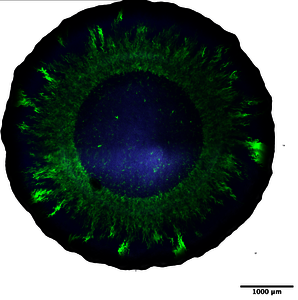Department Environmental Microbiology
Consequences of environmental fluctuations on the spatial self-organization of microbial assemblages
The denitrification process is fundamental for the removal of nitrate in many different environments. The microbial communities involved in the process are inadvertently exposed to temporal fluctuations in their local environment (e.g., day/night cycles, seasonal cycles, and periodic rainfall events in unsaturated soils), and they have developed many strategies to survive and adapt to such fluctuations. These temporal fluctuations can have profound effects not only on individual cells, but also on interactions between different denitrifying cell-types. These effects, however, have not been widely investigated experimentally. Using two isogenic mutant strains of P. stutzeri A1501 that differ in their ability to reduce nitrate and nitrite, we constructed a nitrite cross-feeding model system based on the denitrification pathway. The two strains interact purely competitively for space and oxygen under aerobic conditions, but interact mutualistically via nitrite cross-feeding under anaerobic conditions.
We use our model microbial system to investigate temporal fluctuations in oxygen availability, which may occur naturally in unsaturated soils during periodic rainfall events. Our goal is to understand the consequences of the temporal fluctuations on the spatial self-organization of the microbial assemblage and the ability of the assemblage to maintain productivity over time.

